Stereolithography //
SLA 3D Printing
- SLA Parts Fast
- High-Quality Surface Finish for Prototype Models
- Tight Tolerances, Fine Details
Get a Quote
Or Any of Our 25+ Manufacturing Processes
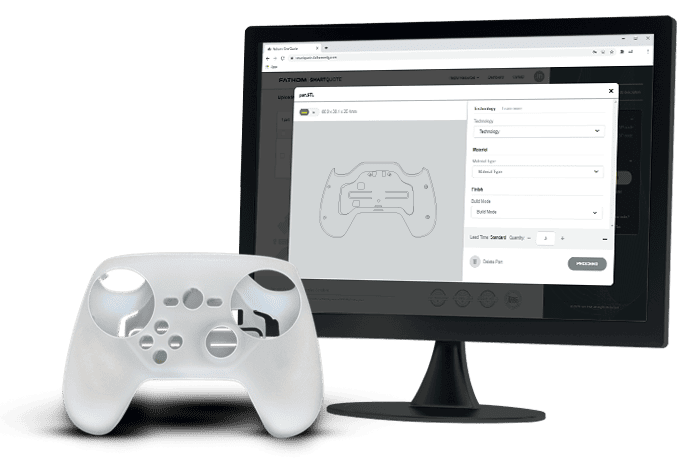
Need High-Quality Additive Parts Fast?
Stereolithography (SLA) Can Help
If you’re looking for a fast, low-cost way to produce presentation models or test the fit and finish of prototype parts, Fathom’s stereolithography (SLA) printing service is an ideal solution.
Since its introduction in the 1980s, SLA has become one of the world’s most popular and widespread 3D printing methods. Designers rely on Fathom’s SLA printing service as a tool to help refine and validate ideas by creating affordable, high-quality physical models.
How Does SLA 3D Printing Work?
Stereolithography 3D printing uses a low-powered ultraviolet laser to harden a liquid photopolymer resin in the shape or a part, one layer at a time. After a layer is complete, the build platform descends slightly and the laser builds the next layer, converting photosensitive liquid plastic into solid plastic.
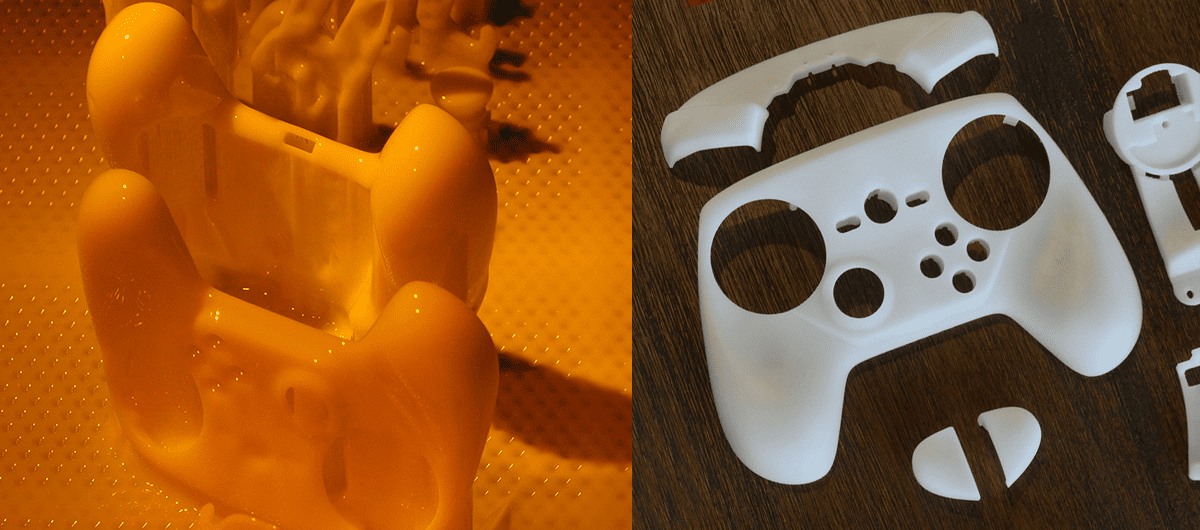
Applications of SLA
Stereolithography produces parts with accurate, detailed features and a high-quality surface finish that is perfect for creating visual prototypes. SLA prototypes are popular within industries that rely heavily on new product innovation, including but not limited to:
- Medical technology
- Education
- Dentistry
- Engineering and product design
- Manufacturing
- Prototyping
What Does SLA 3D Printing Make Possible?
SLA is an ideal technology for producing highly detailed visual models and prototype parts for fit and finish testing. In addition to reproducing fine details with excellent fidelity, it can also be used to produce large-format parts.
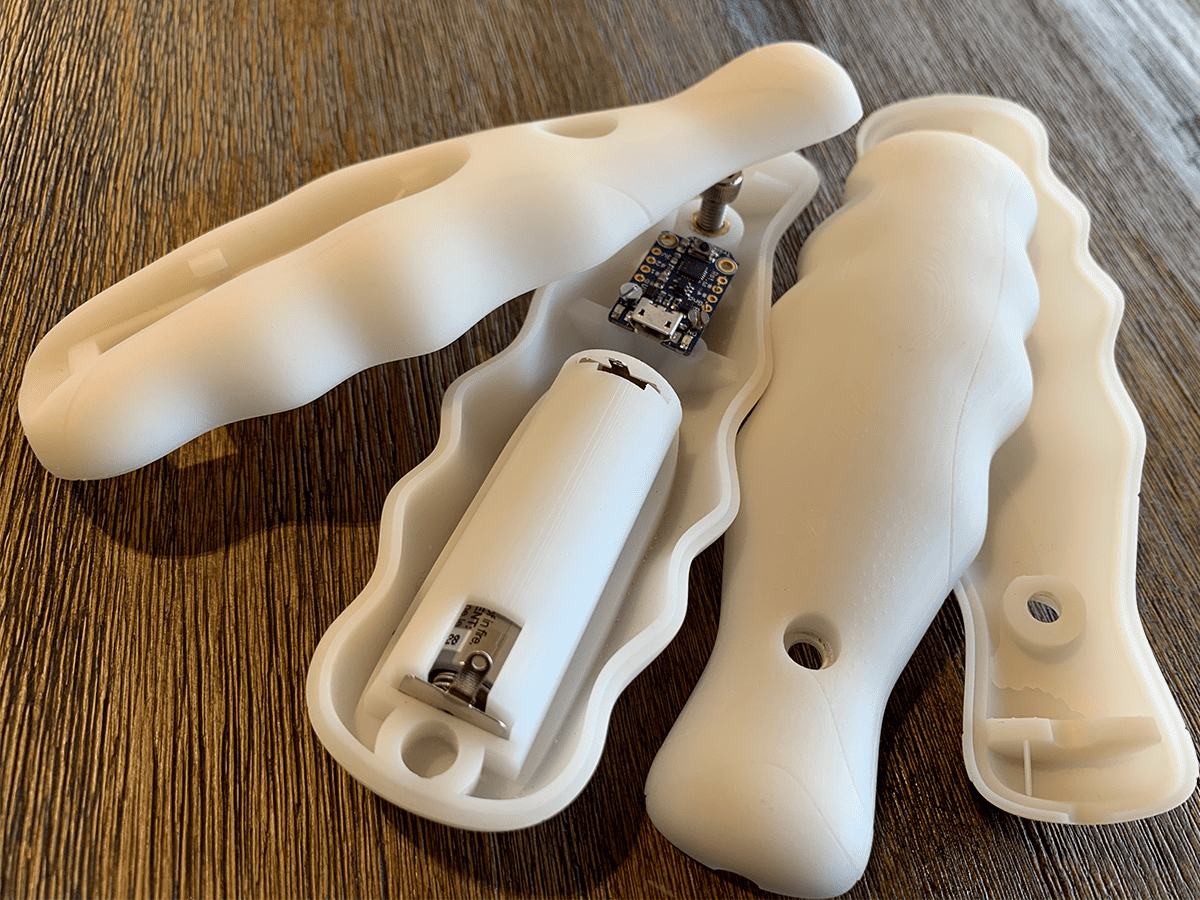
Advantages
High-Quality Surface Finish // The excellent surface finish and dimensional accuracy of SLA prototype parts make them ideal for testing for fit and finish.
Clear Parts // Fathom’s SLA printing service can print parts using a clear resin which can be sanded to an optically clear finish that is almost glass-like in appearance.
Small Layer Size // SLA can print in layers as small as 0.002 inches. That enables it to produce very fine details and cosmetic-quality surfaces.
Print Complex Shapes // Thanks to its fine resolution (hundreds of microns), stereolithography 3D printing can be used to print thin walls, sharp corners, small holes and complex shapes.
Tolerances // SLA offers some of the tightest dimensional tolerances of any additive manufacturing technology.
Larger Prototypes // SLA enables the production of larger, lightweight prototype parts, using internal lattice structures for support.
Easy to Post-Process // Parts produced by Fathom’s SLA printing service are easy to finish by sanding, painting and/or clear coating.
Disadvantages
Sensitivity to UV Light // SLA parts are produced using photopolymers, which means they may become brittle over time when exposed to sunlight.
Not the Strongest Additive Technique // SLA parts are not always as robust as those produced using other thermoset or thermoplastic additive technologies. For that reason, they are not always recommended for functional components. Ask your industrial 3D printing service if SLA is the right additive process for your application.
Support Marks // SLA doesn’t offer the option of dissolvable supports. When supports are removed from parts, they may leave visible marks, which require post-processing to remove.
What Can SLA be Paired With?
SLA can be paired with a variety of other 3D printing technologies to offer a comprehensive solution for visual or form-fit prototypes.
Alternatives to SLA
Traditional Technologies That Can Benefit from SLA
If you’re currently leveraging machining or other traditional methods to produce prototype parts, SLA may be an inexpensive and flexible alternative. It’s one of the least expensive 3D printing technologies. It can be used to produce detailed, accurate parts with an excellent surface finish that is perfect for testing fit and finish.
Unlike machined parts, which require fixturing and set-up, parts produced by Fathom’s SLA printing service can be produced quickly at low cost, making them an ideal solution for your rapid prototyping needs.
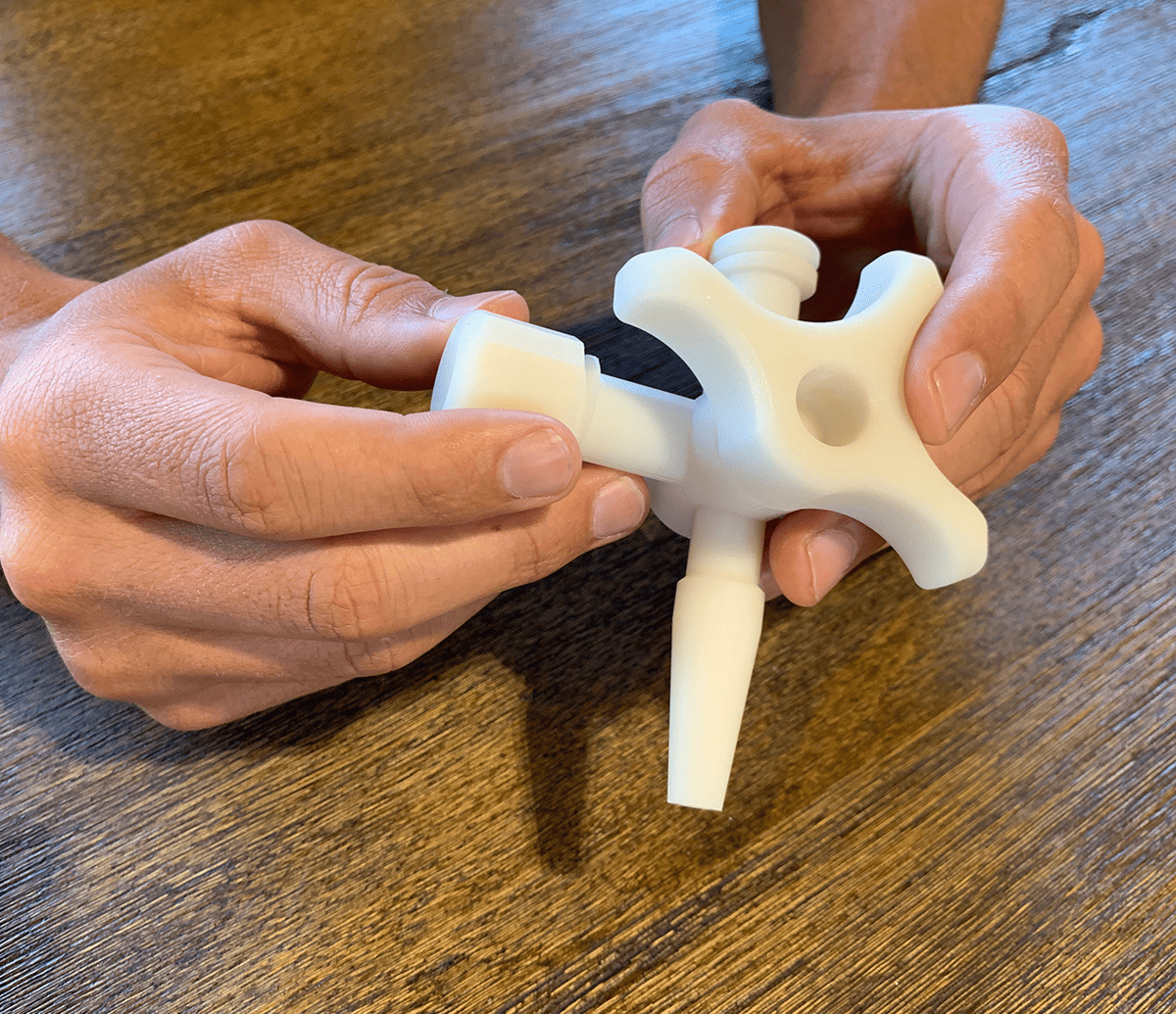
SLA Materials Available
Stereolithography 3D printing uses thermoset photopolymers that can be cured using UV light.
Click on the link below for a list of materials available from Fathom’s SLA printing service. Not sure what you need? Talk to a Fathom expert today!
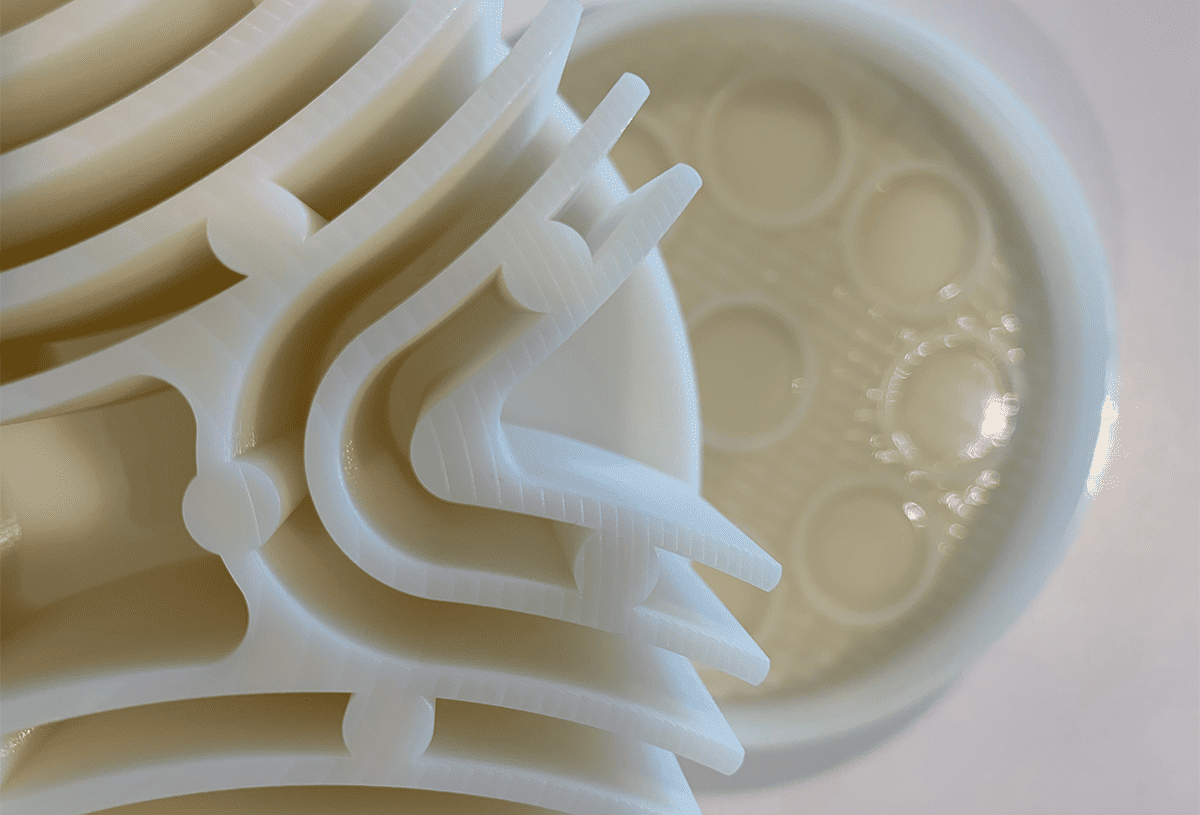
Finishing Options for SLA 3D Printed Parts
Fathom offers a variety of finishing options for SLA parts, including sanding, painting and clear coating. Clear SLA resins can be polished to an optically clear finish.
Fathom offers these post-processing services for SLA parts:
- Sanded
- Media blasted
- Polished (with optional clearcoat)
- Painted (EMI shield)
- Painted (sand and paint, non-cosmetic)
- Painted (sand and paint, cosmetic)
- Painted (customer spec paint)
- Specialty coating
- Plated
- Decals
- Pad printed
- Screen printed
- Inserts
- Post machined
- Assembly
Our craftspeople are ready to meet your SLA post-processing needs. Talk to an expert now.
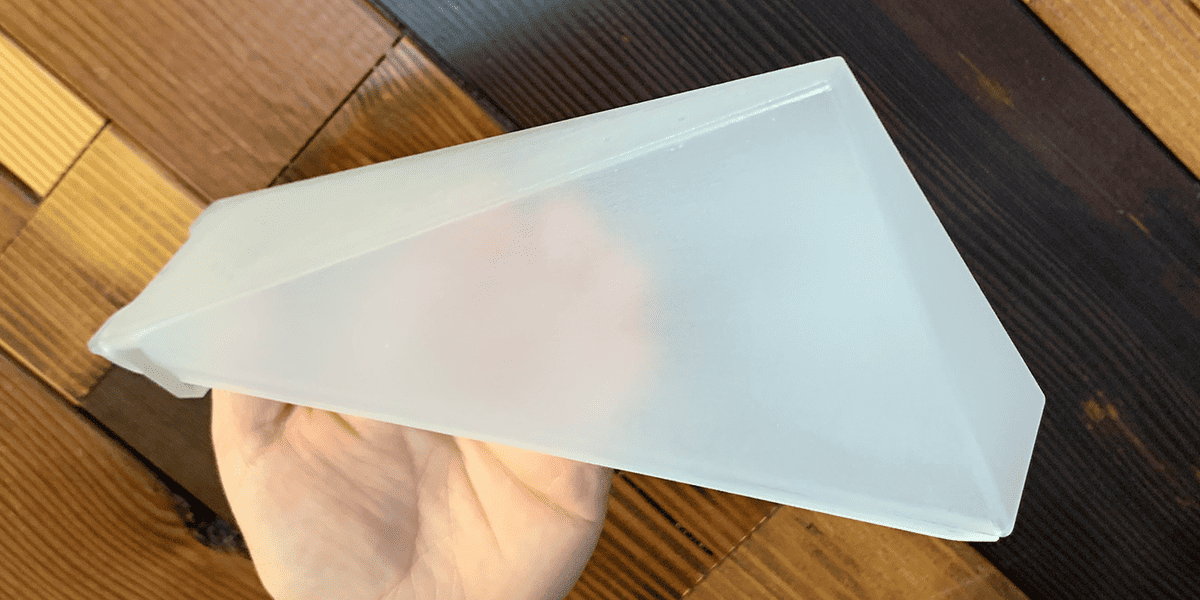
Why Choose SLA 3D Printing?
Accuracy
Its speed, low cost, dimensional accuracy and excellent surface finish make it ideally suited to creating visual models and for testing the fit and finish of prototype parts.
Complexity
SLA can reproduce small details and complex shapes that may be challenging for other additive technologies to reproduce.
Dimensions
SLA can be used to create large format parts, using lattice structures for internal support to reduce the weight of the model.
Clarity
A clear resin option and post-printing polishing enable you to create optically clear shapes such as windows and bottles.
Why Choose Fathom’s SLA 3D Printing?
Fathom’s SLA printing service has the capacity and expertise to help you produce high-quality parts to meet your prototyping needs.
An experienced engineer will help you first determine if SLA is the right solution and will guide you to optimize your part design for the best results.
Get a quote on your SLA project today with our SmartQuote platform.
